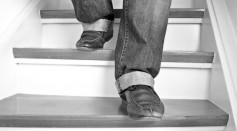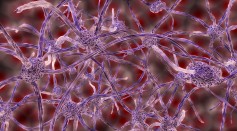walk

Experimental Spinal Implant Allows Man With Advanced Parkinson's Disease To Walk Freely

Electrical Stimulation on a Specific Group of Neurons Restored Ability To Walk in Paralyzed Patients

Robotic Boot-like Exoskeleton Personalizes Assistance To Help People Walk Faster, Easier

Japanese Children Walk Differently Compare to Kids From Other Countries, Study Claims

Sleep Deprivation More Dangerous Than Thought, Affects One's Ability to Walk

People Who Walk To Work Are Healthier, Study Says
How Ancient Kangaroos Walked Off the Face of the Earth and Hopped into Future Generations
Most Popular

How Technology Is Changing the Real Estate Industry?

How a Plant-Based Diet Can Protect Against Breast Cancer: Insights from Nutrition Research

Study Reveals High Turnover in Scientific Research Careers: What This Means for Future Scientists

Why It's So Difficult to Lose Weight: The Biological Explanation Behind Obesity






